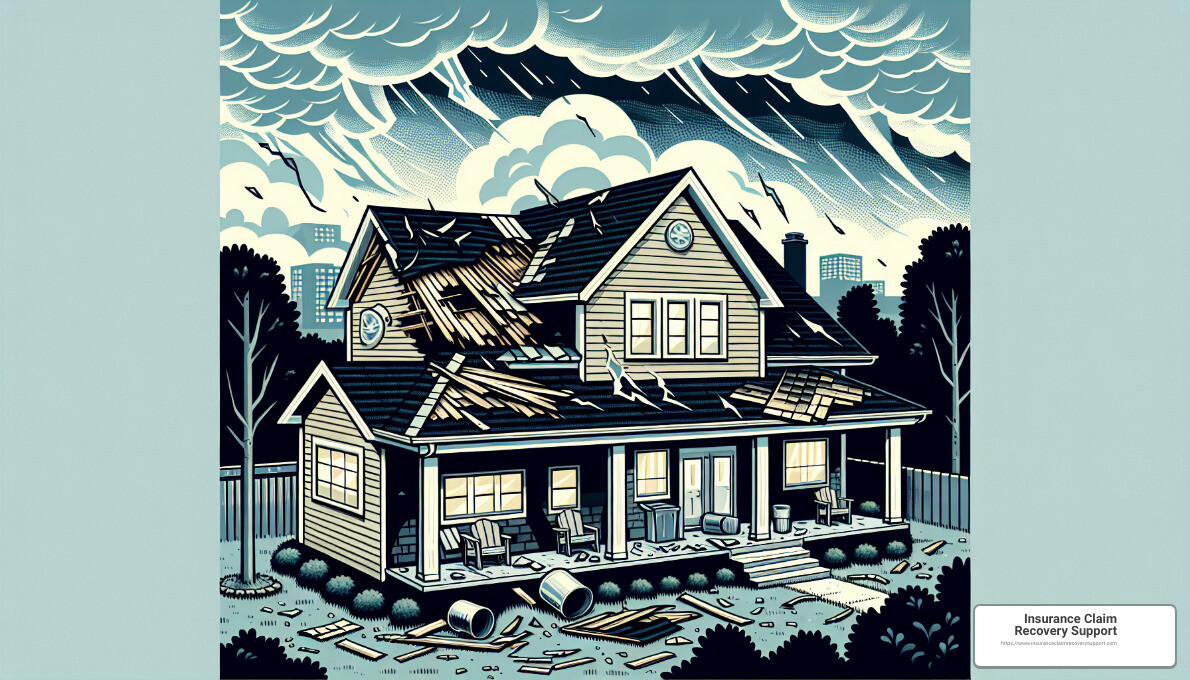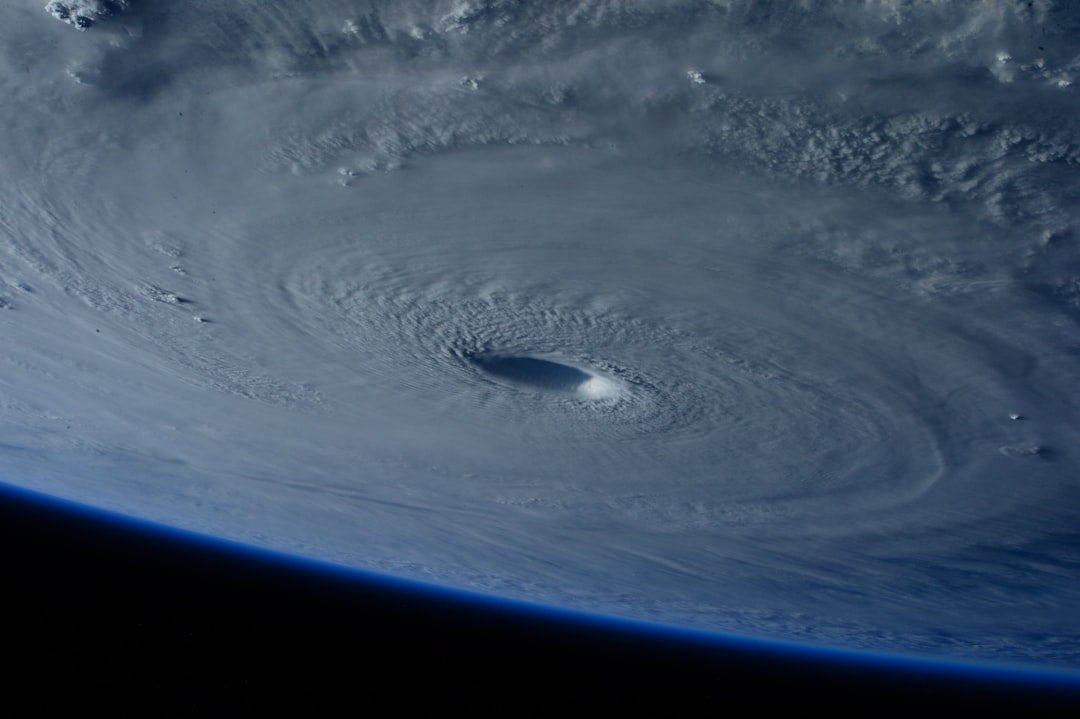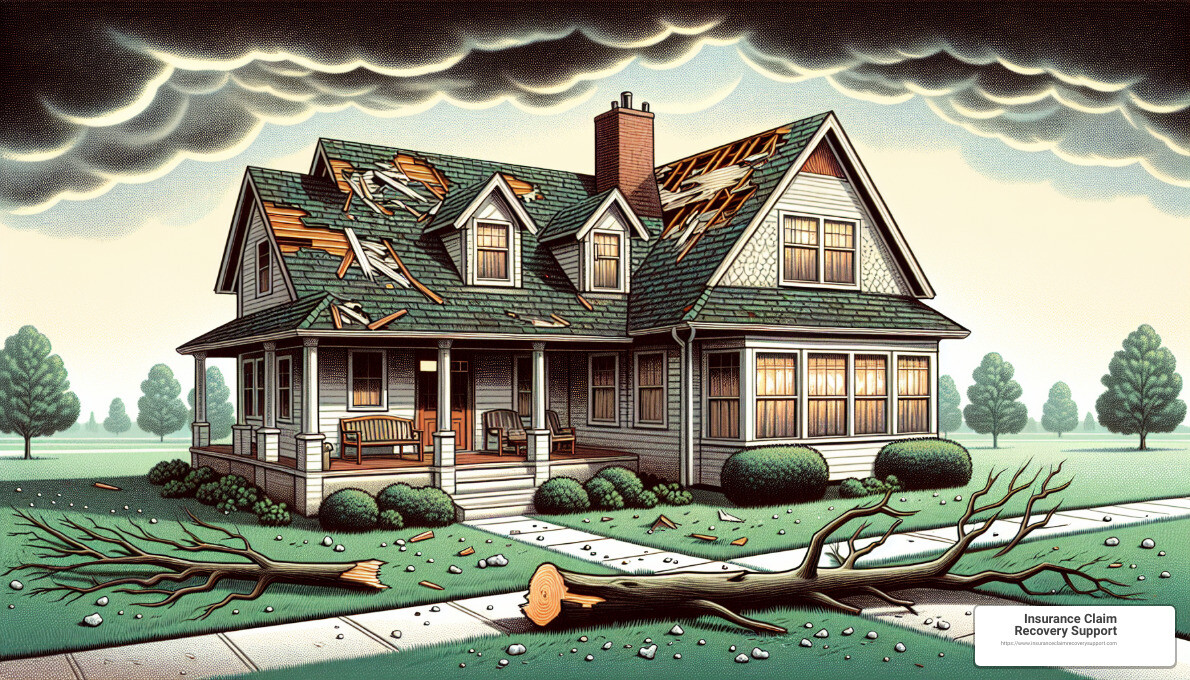Hailstorms in Texas have a significant impact on roofs, highlighting the importance of immediate and thorough assessments. Quick action can mean the difference between a minor repair and costly, extensive damage. For property owners across Texas, recognizing and addressing hail damage on roofs is crucial to maintaining the integrity of your buildings and ensuring the safety and comfort of their occupants.
Hail damage to roofs can be deceptively destructive, with the potential to compromise the structural integrity of your property. Following a hailstorm, assess the extent of the damage promptly. This initial check can help you understand whether you need professional repairs or if it might be time to file an insurance claim. This step is not about fixing the problem yourself; it’s about quickly identifying areas that require professional attention.
Insurance claims for hail damage can be complex, and navigating through this process can be daunting, especially when facing the insurance company’s strategies to minimize claim payouts. Thus, knowing the signs of hail damage and the correct steps to assessment is not just practical—it’s pivotal. This guide aims to arm you with the knowledge needed to identify hail damage and effectively engage with insurance claims to ensure you’re rightfully compensated.
To get you started, here’s an informative breakdown addressing your search intent “hail damage roof”:
- Quick Inspection Tips: Look for visible signs of damage like dents on metal surfaces, cracked or missing shingles, and granules collecting in gutters.
- Professional Inspection: Always engage with professionals for thorough damage assessment to avoid unnoticed issues.
- Insurance Claim: Understand your policy details and promptly file a claim if damage is present.
- Preventive Measures: Consider steps to mitigate future hail damage, such as installing hail-resistant roofing materials.

Understanding Hail Damage
Hail damage to your roof isn’t just about the dents you can see from the ground. There’s a lot more happening up there than meets the eye. Let’s break it down into simple parts: Types of Damage, Hail Size, Roof Materials, Wind, Age and Condition.
Types of Damage
Hail can cause a variety of damage types to your roof, including but not limited to:
- Granule Loss: This happens when hail knocks off the protective granules from your shingles, leaving the asphalt exposed to the sun and elements.
- Cracks and Splits: Hail can crack or split shingles, especially wood shingles, leaving your roof vulnerable to water intrusion.
- Fractured Mat: Underneath the granules and asphalt, there’s a mat that can be fractured by hail impacts, weakening your roof’s integrity.
- Dents in Metal: Metal vents, flashing, and gutters can be dented, which might compromise their functionality.
Hail Size
The size of hailstones plays a big role in the type and severity of damage. Pea-sized hail might not do much, but once you get hailstones the size of a quarter or larger, the potential for damage increases significantly. The largest hailstone on record measured a whopping 7.87 inches in diameter – larger than a bowling ball!
Roof Materials
Different materials react differently to hail. Asphalt and composition shingles might lose granules and show black hail hits, while wood shingles can split with sharp corners and edges. The material’s ability to absorb impact without breaking down varies, affecting the extent of the damage.
Wind
Wind can change everything. It affects the angle at which hail hits your roof, which can lead to more severe damage in some areas. Fast-moving hail driven by strong winds can cause more destruction than hail falling straight down.
Age and Condition
An older roof is more likely to be damaged by hail. As roofs age, materials break down, making them more susceptible to hail impacts. A new roof made with modern, hail-resistant materials is less likely to suffer severe damage.
In Summary
Hail damage isn’t always obvious, especially from the ground. The type of damage, size of the hail, roofing materials, wind conditions, and the age and condition of your roof all play a part in how your roof will fare during a hailstorm.
After a storm, it’s wise to:
- Check for signs of damage, like granule loss or dents in metal.
- Call in professionals for a thorough inspection.
- Work with your insurance for any necessary claims.
- Consider future-proofing your roof against hail.
Understanding these aspects of hail damage can help you better prepare for and respond to hailstorms, keeping your roof in top shape for years to come.
Identifying Signs of Hail Damage on Your Roof
When hail hits, it doesn’t tap gently; it leaves a mark, or several. Knowing what to look for can save you from bigger headaches down the road. Let’s break it down by shingle type:
Asphalt and Composition Shingles
Asphalt shingles are the most common roofing material, but they’re also very vulnerable to hail. Here’s what hail damage might look like:
- Granule Loss: Hail can knock the granules off your shingles, leaving bare spots. These granules protect your roof from UV rays, so their loss can speed up the aging of your shingles.
- Black Hail Hits: These are areas where hail has knocked off the granules, exposing the asphalt underneath. They’re not just unsightly; they’re a sign your roof’s protection is compromised.
- Shiny Asphalt: When the granules are knocked off, the underlying asphalt layer can become shiny in the sunlight. This is a clear sign of recent hail impact.
- Random Damage: Unlike wear and tear that shows a pattern, hail damage is random. No two hailstones follow the same path, and their impacts are scattered.
Wood Shingles
Wood shingles react differently to hail. Their damage signs include:
- Split Shingles: Hail can cause wood shingles to split. Look for splits that have a brown/orange coloration, as this indicates they are fresh.
- Sharp Corners: Unlike weather-related wear, which tends to round the edges of wood over time, hail-induced splits have sharp, defined corners.
- Brown/Orange Color: This color inside the split is a tell-tale sign of recent hail damage. Over time, the wood will gray as it’s exposed to the elements, so fresh splits are easier to identify.
General Signs Across All Roof Types
- Exposed Mat: On asphalt shingles, if the matting beneath the granules is visible, it’s a sign of significant hail impact.
- Fractured Mat: For both asphalt and wood shingles, a hard enough hail hit can fracture the mat beneath the surface, compromising the integrity of the shingle.
- Weakened Seal: Hail can break the sealant bond between shingles, increasing the risk of shingles blowing off in future storms.
- Dents in Metal: Metal components of your roof, like flashing, vents, and gutters, can also show dents from hail impacts. These are clear indicators of the storm’s severity.
The signs of hail damage can be subtle but significant. After a hailstorm, even if you don’t see obvious damage, it’s wise to get a professional inspection. An expert eye can spot the less obvious signs of hail impact and help you take the necessary steps to protect your home.
In the next section, we’ll dive into how hail impacts different Texas cities and what that means for homeowners in those areas. Stay tuned, your roof is your first line of defense against the elements. Keeping it in good shape is crucial.
The Impact of Hail Damage on Different Texas Cities
Hailstorms don’t treat all Texas cities equally. Depending on where you live, your roof might face different risks and types of damage. Let’s look at how hail affects various cities across the Lone Star State.
Austin and Dallas: Hail and High Winds
Both Austin and Dallas are familiar with the wrath of hail. These cities often experience storms that bring not just hail but also high winds. These conditions can lead to significant roof damage, including missing shingles and dents in metal roofing components. Homeowners in these cities should be particularly vigilant about inspecting their roofs after a storm.
Fort Worth: Large Hailstones
Fort Worth has seen its share of large hailstones, some as big as tennis balls. This kind of hail can cause severe damage, punching holes in roofs, breaking windows, and damaging cars. After such a storm, it’s crucial to assess roof damage immediately to prevent water from entering your home.
San Antonio and Houston: Frequent Storms
San Antonio and Houston face frequent storms that can bring hail along with heavy rain. This combination can be particularly harsh on roofs, leading to leaks and water damage. Homeowners should ensure their gutters and downspouts are clear to prevent water from backing up under the shingles.
Lubbock: Wind and Hail
Lubbock’s unique challenge comes from the combination of wind and hail. The wind can exacerbate hail damage by driving hailstones at an angle, causing them to hit the roof with more force. This can lead to a higher chance of damage, especially to asphalt shingles.
San Angelo: Rare but Severe Storms
San Angelo may not see hail as often as some other Texas cities, but when it does, the storms can be severe. In these cases, the damage can range from dented gutters and downspouts to broken roof tiles or shingles. It’s a reminder that even rare events can cause significant damage.
Waco, Round Rock, Georgetown, Lakeway: Varying Degrees of Risk
Cities like Waco, Round Rock, Georgetown, and Lakeway each have their own hail stories. While they may not face the same level of risk as Dallas or Fort Worth, they are not immune to hail damage. Homeowners in these areas should still be prepared to inspect and repair their roofs as needed.
In summary, no matter where you live in Texas, hail can be a threat to your roof. The damage can vary from cosmetic to structural, depending on the storm’s severity and your roof’s condition and materials. After a hailstorm, it’s important to:
- Inspect your roof (safely) or have a professional do it.
- Document any damage you find.
- Contact your insurance company if you need to file a claim.
- Repair the damage as soon as possible to protect your home.
Hailstorms are a part of life in Texas, but with the right preparation and response, you can minimize their impact on your home. Taking action quickly after a storm can save you time and money in the long run.
In the next section, we’ll discuss how to respond to hail damage, including navigating the insurance claims process and finding a professional to inspect and repair your roof. Stay tuned for expert tips on keeping your home safe and secure.
How to Respond to Hail Damage
Insurance Claim Recovery Support LLC
After a hailstorm damages your roof, you might feel overwhelmed. Here’s a simple guide on what to do next, focusing on the insurance claims process, getting a professional inspection, and ensuring your home stays safe with temporary fixes. We’ll also touch on how Insurance Claim Recovery Support LLC can advocate for you, helping to maximize your settlement.
Insurance Claims Process
- Document the Damage: Take clear photos of the hail damage from different angles. This includes any visible damage on the roof, dents in metal fixtures, and broken shingles.
- Contact Your Insurance Company: Report the hail damage as soon as possible. Provide them with the documentation of the damage.
- Adjuster Inspection: Your insurance company will send an adjuster to inspect the damage. Be present during the inspection if you can, to ensure all damage is noted.
Professional Inspection
- Hire a Roofing Expert: Before or after the insurance adjuster’s visit, consider hiring a roofing professional to inspect your roof. They can provide a detailed report on the damage, which can be useful if there’s a discrepancy with the insurance company’s assessment.
Safety Precautions
- Stay Off the Roof: Hail can make roofs slippery and dangerous. Leave the inspection to professionals with the right safety equipment.
- Secure Your Home: If the storm created openings in your roof, cover them with a tarp to prevent water damage inside your home.
Temporary Fixes
- Cover Broken Windows and Vents: Use plywood or heavy-duty plastic to cover any broken windows or vents caused by the hail.
- Tarp the Roof: If there’s significant damage, covering the affected area with a tarp can prevent further interior and structural damage until repairs can be made.
Advocating for Policyholders
Insurance Claim Recovery Support LLC stands by policyholders throughout the claims process. We understand the tactics insurance companies might use to minimize payouts. Our team, led by experts like Scott Friedson, is committed to:
- Navigating the Claims Process: We guide you from filing to settlement, ensuring all paperwork is complete and deadlines are met.
- Maximizing Settlements: Our goal is to ensure you receive a fair settlement that covers all necessary repairs, not just the minimum the insurance company is willing to pay.
With Insurance Claim Recovery Support LLC, you’re not facing the insurance company alone. We advocate for your best interests, leveraging our expertise to secure the settlement you deserve.
The aftermath of a hailstorm doesn’t have to be a disaster. With the right steps, you can navigate the insurance claims process smoothly, get your roof repaired, and ensure your home is safe and sound. Insurance Claim Recovery Support LLC is here to help every step of the way, advocating for you and maximizing your settlement.
Preventing Future Hail Damage
After a hailstorm, once the dust settles and repairs are underway, it’s time to think about the future. How can you minimize hail damage to your roof next time? Let’s dive into some proactive steps you can take.
Hail-Resistant Materials
When it comes to roofing materials, not all are created equal. Some are specifically designed to withstand the impact of hailstones, offering a higher level of protection than standard options. For instance, impact-resistant shingles are rated by Underwriters Laboratories (UL), with a Class 4 rating being the highest for hail resistance. These shingles might cost more upfront but can save you money in the long run by reducing the need for repairs after a storm.
Regular Maintenance
A well-maintained roof is your first line of defense against hail damage. Here’s what you can do:
- Annual Inspections: Have a professional roofer inspect your roof at least once a year. They can catch and fix small issues before they become big problems.
- Clear Debris: Keep your gutters and roof surface clear of debris. This prevents water buildup that can weaken your roof over time.
- Trim Trees: Overhanging branches can scratch or puncture your roof during a storm. Keep trees trimmed and away from your house.
Protective Barriers
In some cases, adding extra layers of protection can help shield your roof from hail:
- Roof Underlayment: A strong, water-resistant or waterproof layer beneath your shingles can provide additional protection against hail.
- Window Screens: Hail can break windows and damage interiors. Installing screens or shutters can offer an extra layer of defense.
By combining hail-resistant materials, regular maintenance, and additional protective measures, you can significantly reduce the risk of hail damage to your roof. It’s about being proactive rather than reactive. While no solution offers 100% protection, these steps can make a big difference in the durability and longevity of your roof.
Remember that Insurance Claim Recovery Support LLC is here not just to help you recover from hail damage but to support you in taking proactive steps to protect your property. Let’s work together to keep your home safe from future storms.
Conclusion
When dealing with hail damage on your roof, the importance of timely action cannot be overstated. The longer you wait to address the damage, the more extensive – and expensive – repairs can become. From minor leaks leading to significant water damage inside your home to compromised structural integrity, the aftermath of a hailstorm can escalate quickly. That’s why it’s crucial to act fast and assess the damage as soon as possible after a storm.
Seeking professional help is equally important. While it might be tempting to assess the damage yourself or delay professional inspections, only experts can accurately determine the extent of hail damage. Professionals have the tools, knowledge, and experience to spot less obvious signs of damage that untrained eyes might miss. They can also provide you with a comprehensive report that can support your insurance claim, ensuring you receive the compensation you’re entitled to.
At Insurance Claim Recovery Support LLC, we understand the challenges and frustrations that come with hail damage and insurance claims. Our team is dedicated to advocating for policyholders, helping you navigate the complexities of the insurance claims process, and working tirelessly to maximize your settlement. With our expertise, we ensure that your hail damage claim is handled efficiently and effectively, so you can focus on getting your home and life back to normal.
The key to managing hail damage is not just about repairing the damage after the fact; it’s about being proactive and prepared. With Insurance Claim Recovery Support LLC by your side, you have a partner ready to support you through every step of the process – from initial damage assessment to final repairs and beyond. Let us help you protect your home against the unpredictable Texas weather and secure the fair settlement you deserve.
In conclusion, timely action and professional assistance are critical in dealing with hail damage. With Insurance Claim Recovery Support LLC, you’re not alone. We’re here to offer the support, expertise, and advocacy you need to navigate the aftermath of a hailstorm confidently. Reach out to us today, and let’s work together to safeguard your home and ensure your peace of mind.









